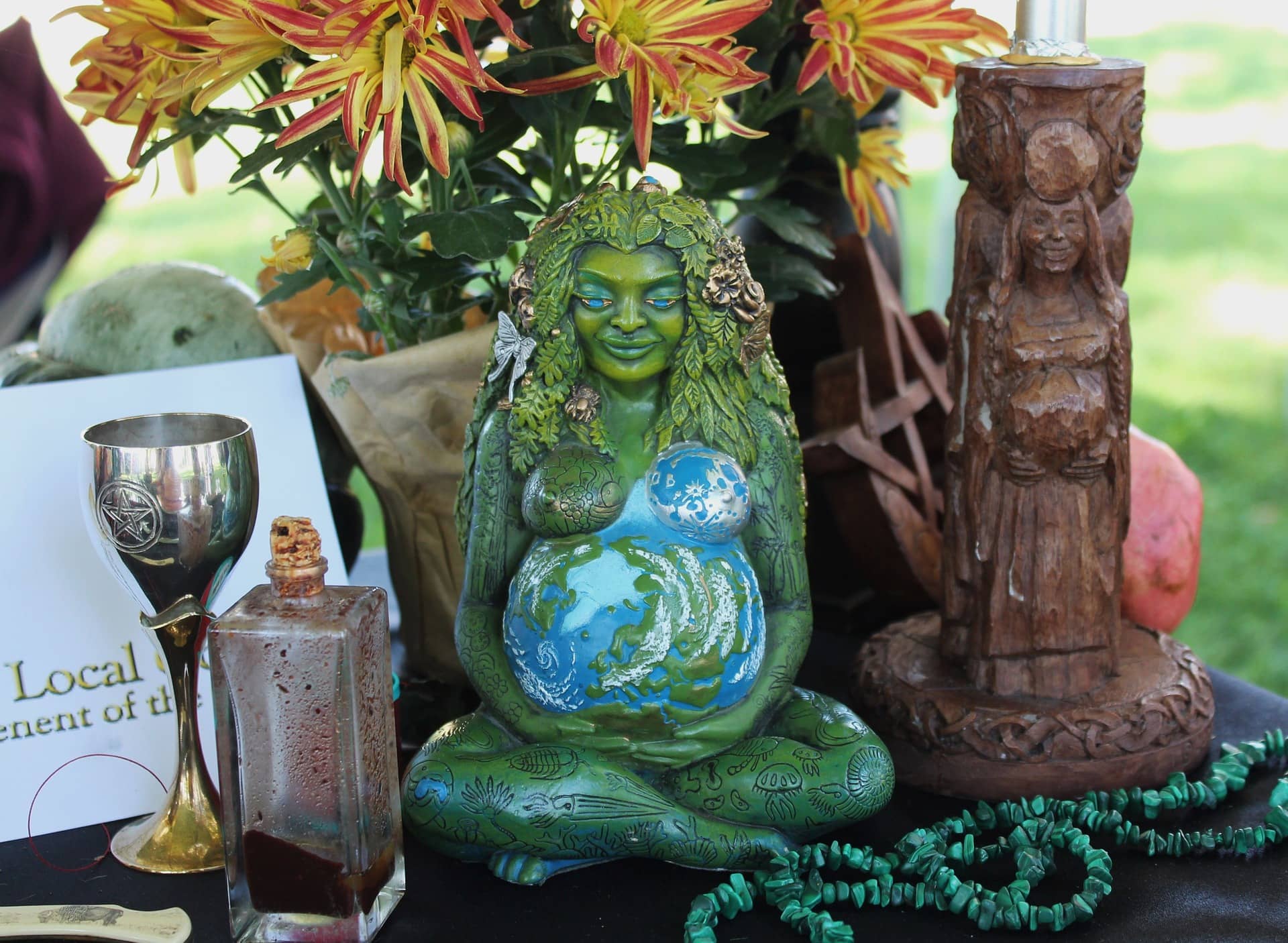But that lifetime didn't include thousands of tourists clambering up and down the stone steps of the island, exhorting their small children to be careful, and snapping photos of the picturesque ruins.
David, who dislikes crowds, hot sun, and ruined castles, had simply gone down to wait in the café. While I can have a spiritual experience under many trying circumstances, I find it difficult to commune deeply with the spirit of a place when someone is waiting for me in a café.
"Let's go back to London," David said over Cornish pasties when I joined him. "We could go to the British Museum and look at artifacts. I've had enough of the British countryside."
Instead, using that combination of charm, persuasion, and subtle emotional threats that we all exert in relationships, I talked him into a hike to Saint Nectan's Kieve, an obscure sacred place neither of us had ever heard of but that friends had recommended.
 | ||
| We turned and saw the waterfall, a gleaming spear of light dropping through a ring of stone and churning in a smooth rock cauldron. | ||
 |
We knew nothing about St. Nectan, except that he had apparently lived as a hermit in a remote glen where knights had come to bathe and meditate before they went off to seek the Holy Grail.
We weren't terribly clear on what a kieve was, but the hike sounded shady, which pleased David, and we were told that at the end there was a waterfall and a place to get a cream tea.
The bushes alongside the stream were hung with offerings of ribbons, colored threads, and small charms. They told me that this place was loved, that we were not the first Pagans to visit.
We could hear the roar of the waterfall behind us, but the curve of the rocks hid it from view. Some young people who had preceded us were standing in the middle of the stream photographing something. When they moved away, we stepped carefully over the rocks and stood perched precariously in the middle of the flowing stream. We turned and saw the waterfall, a gleaming spear of light dropping through a ring of stone and churning in a smooth rock cauldron. The light, the sound, the flow of water spilling out of its rock chalice all combined to sing of abundance, of renewal, of overflowing energy and life force.
"This is it!" David said, as he came up from behind me, his voice low but excited. "This is the Holy Grail! They went looking for it everywhere, but it was here all along."
He was right. Before us was a powerful vessel, a chalice charged with deep magic and the capacity to restore life.
The scene reminded me of a hike I'd taken in the Judean desert above the Dead Sea, at the springs of Ein Gedi. In the midst of a bone-dry landscape of bald hills and stark rocks, springs gush forth from the sand. My friend Jenny and I had climbed up to the source of the spring, a clear pool edged by rock and surrounded by lush, green rushes. Under the gaze of a young Israeli paid to guard the place, we bathed in the spring and then continued up to the ruins of a Neolithic temple high on the mountainside. We were puzzling over a circular rock enclosure in the center. A man passing by informed us that archaeologists believed a sacred tree had once grown there in the center of the courtyard.
"This is it!" I'd begun babbling to Jenny. "This, or places like it, are the origin of all Jewish ritual. Don't you see? You're supposed to bathe, or at least wash your hands, before entering the temple. A mikvah, a ritual bath, has to be living water from a spring or a natural body of water. And in Hebrew, to go to a sacred place is aliayah, "to go up." You make aliyah to Israel, to Jerusalem, to the altar in the Temple. And what do you find there but the Torah, which is the Tree of Life, as Asherah the Goddess was once the pillar/tree in the Pagan temple."
In earth-based spirituality, the grail, the Goddess, the sacred, are not abstract symbols; they are embodied in the land itself. Sacred places are all around us--everywhere clean water emerges from a hillside, everywhere an old and beautiful tree grows. The Holy Grail is an overflowing spring, is our own bodies' moisture in moments of ecstatic pleasure, is the chalice of the chlorophyll molecule transforming sunlight into food.
The greatest mysteries are found in the most common things.
David and I stood for a long time, watching the water spill into its bowl and overflow. Then we climbed back up the stairs to celebrate with scones, clotted cream, strawberry jam, and tea.

